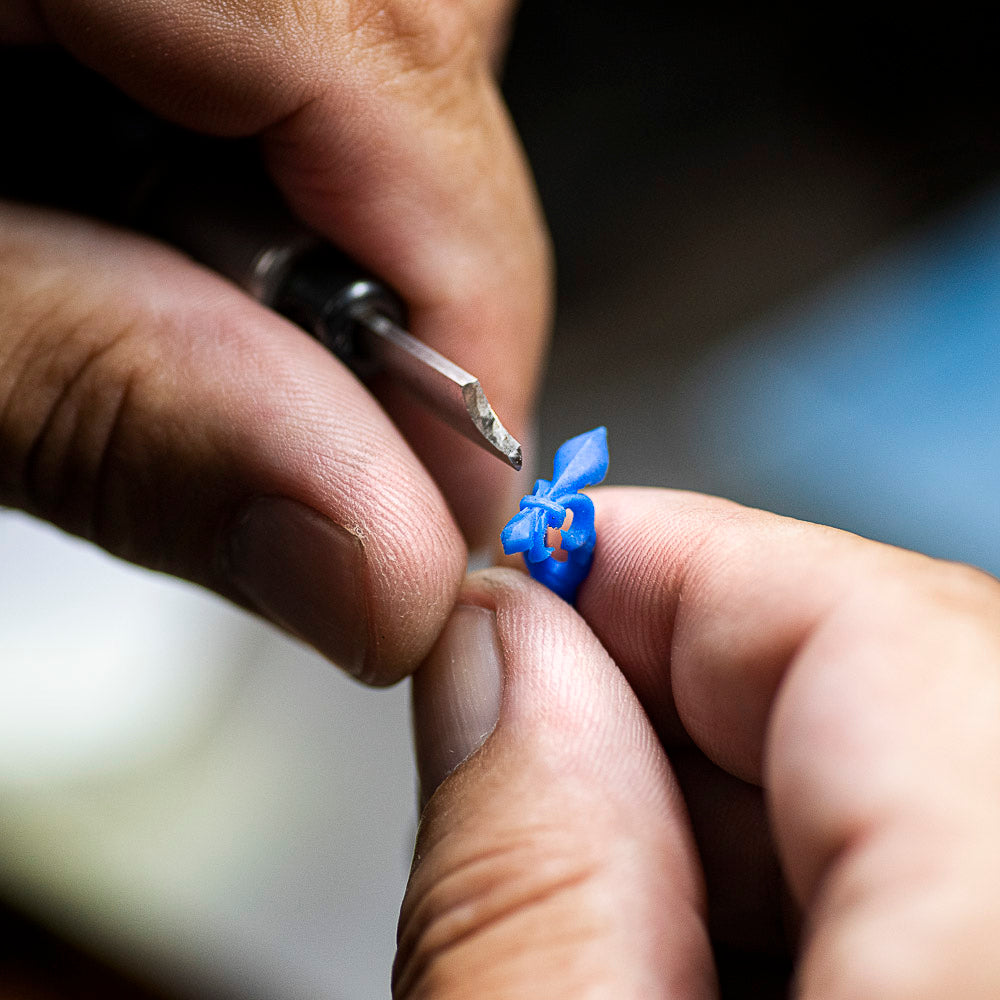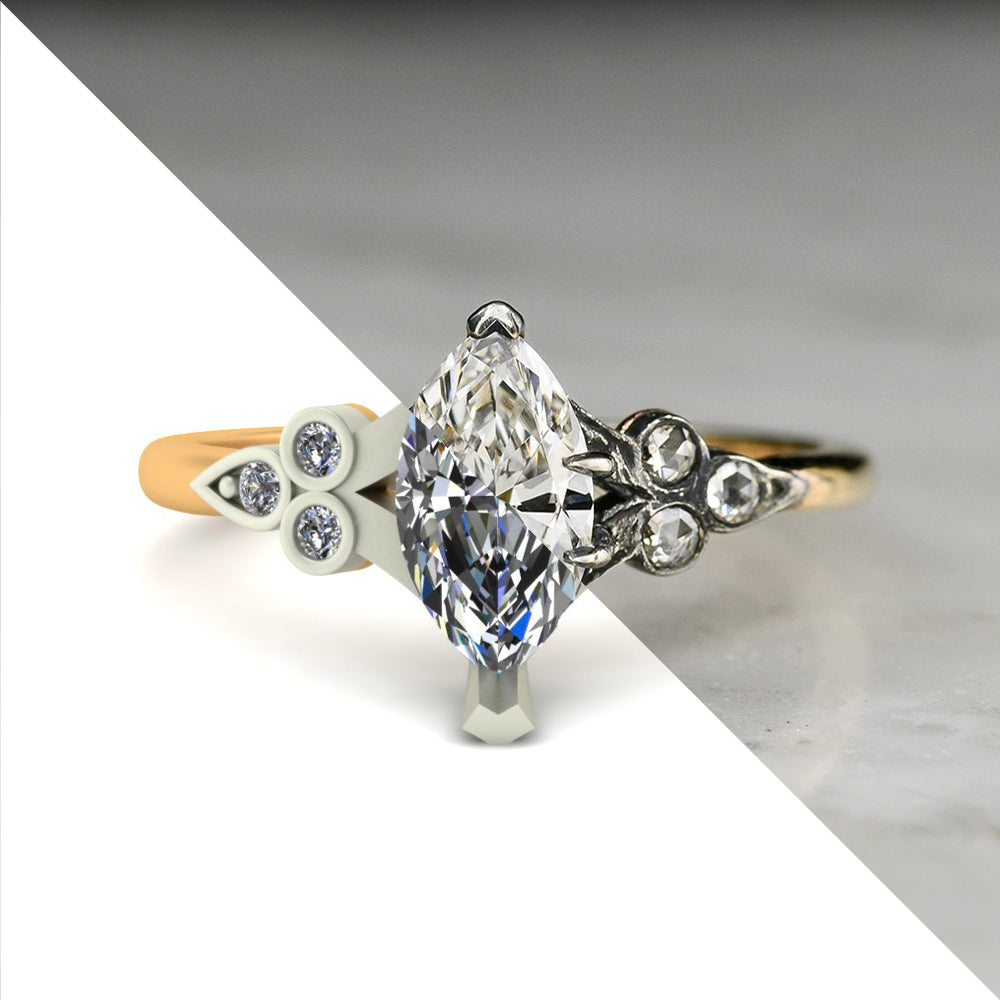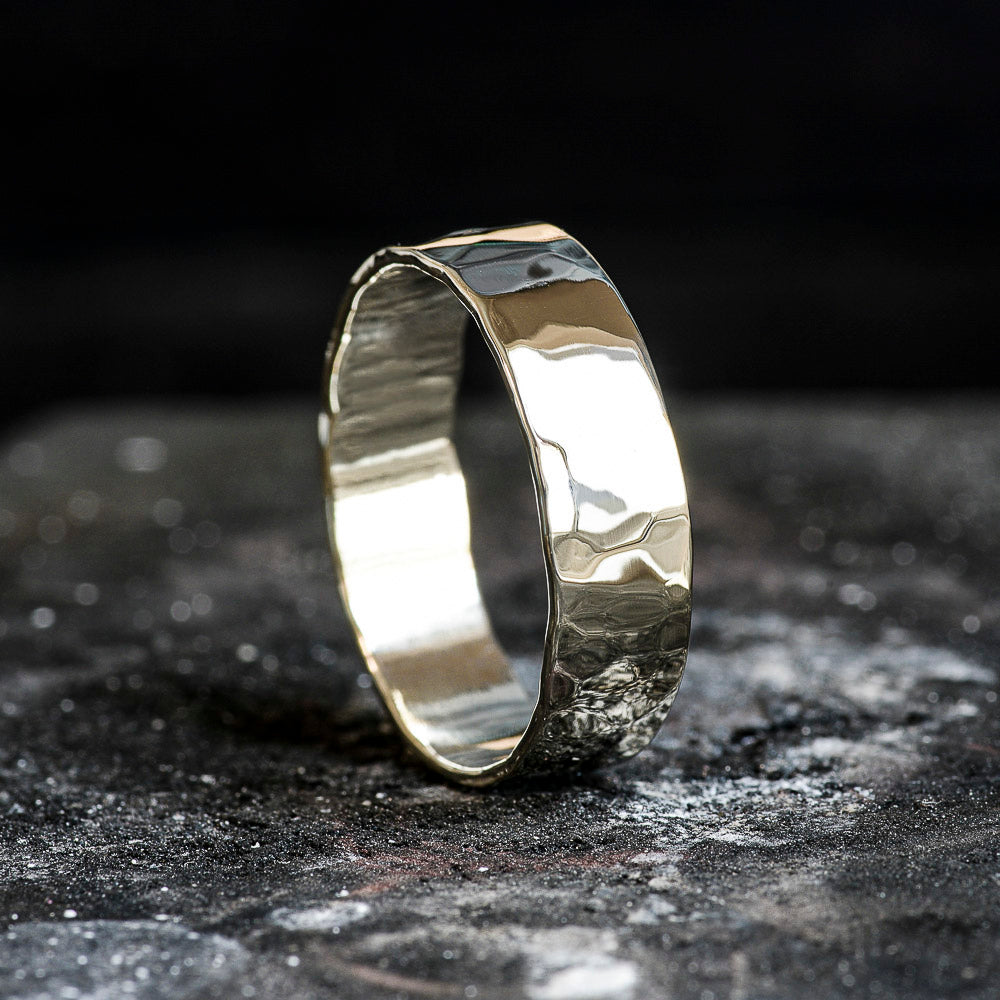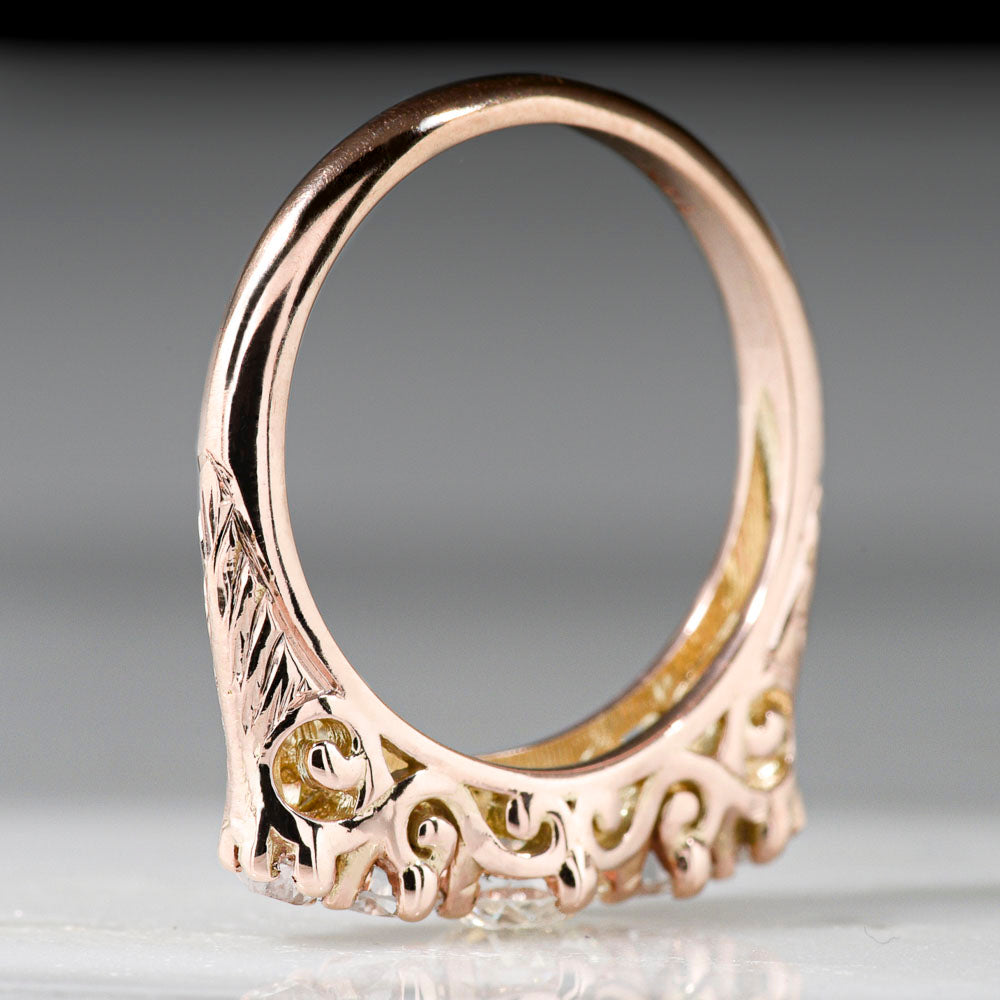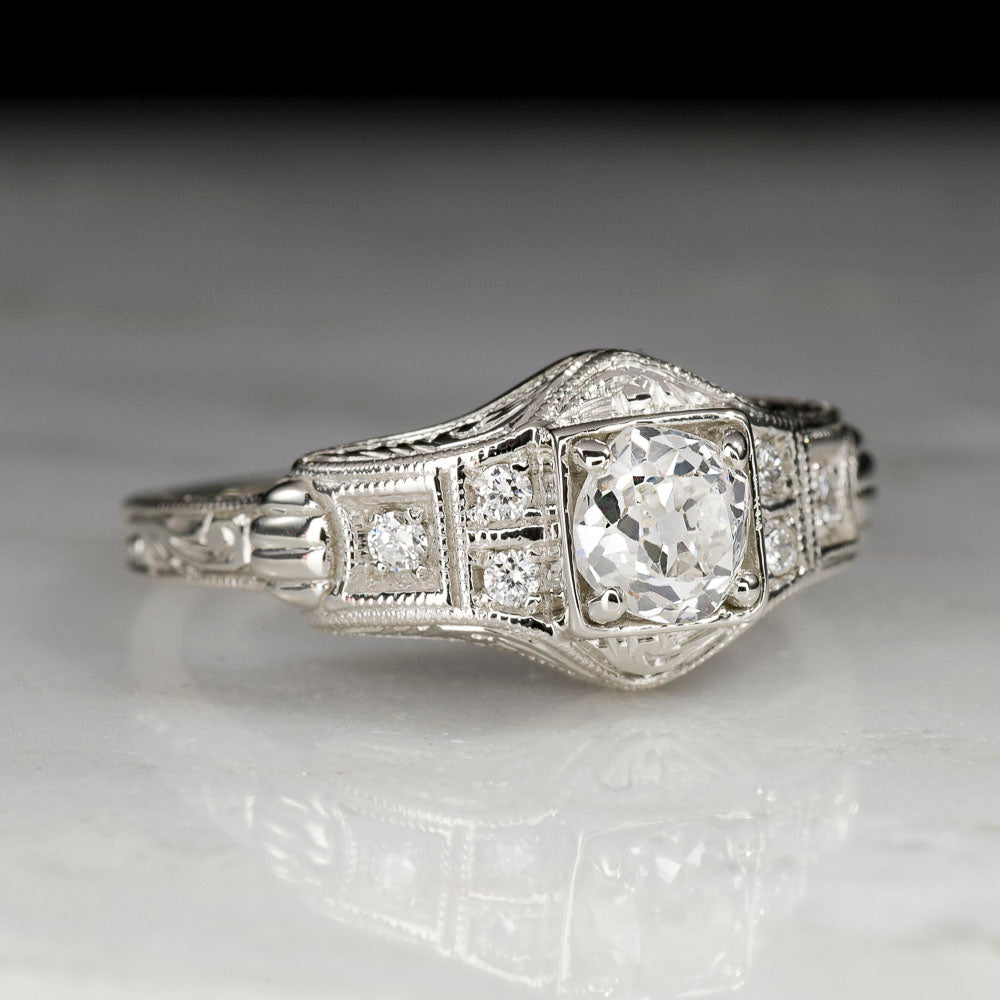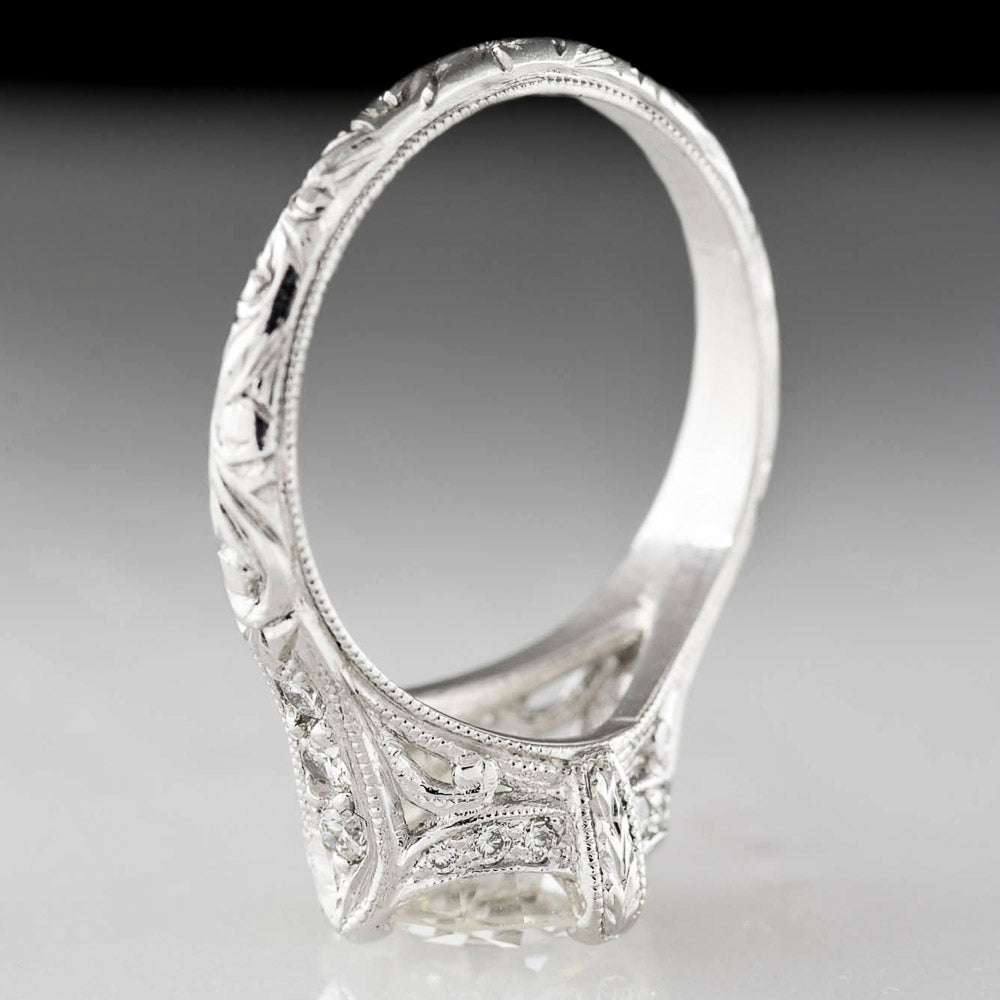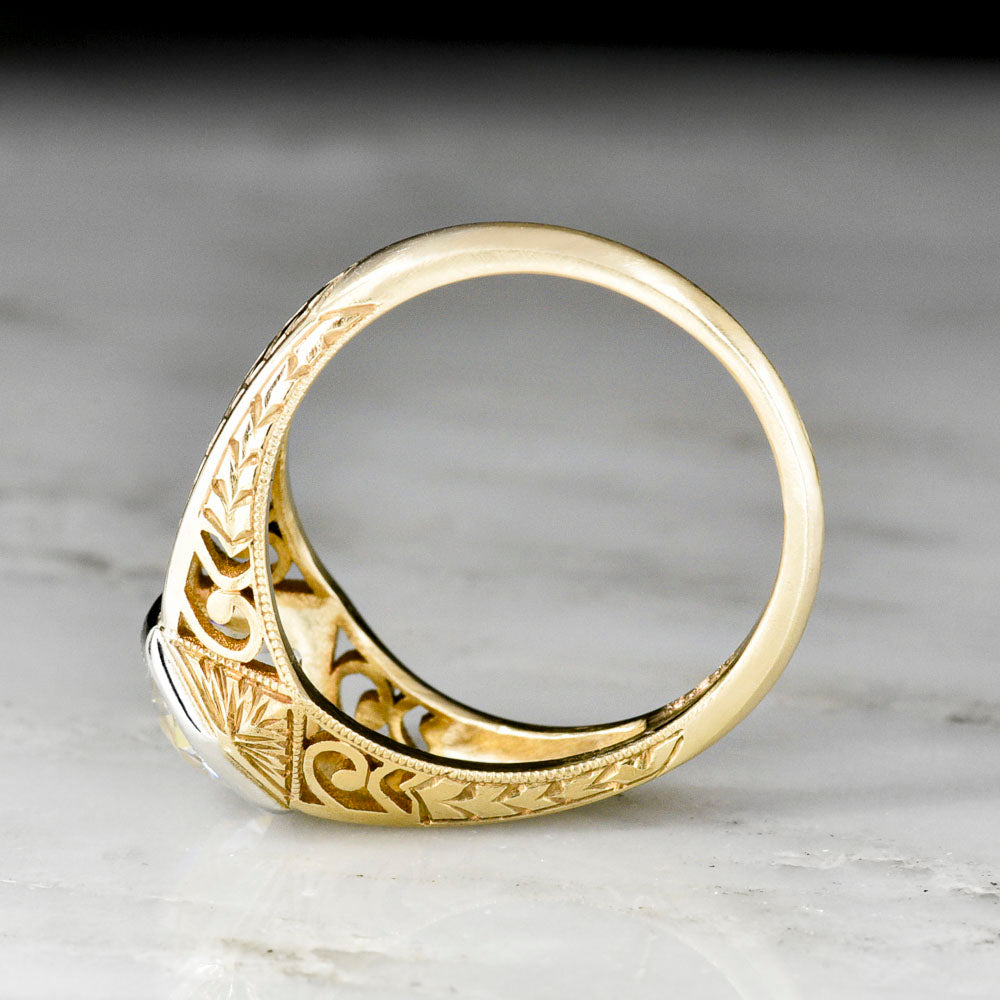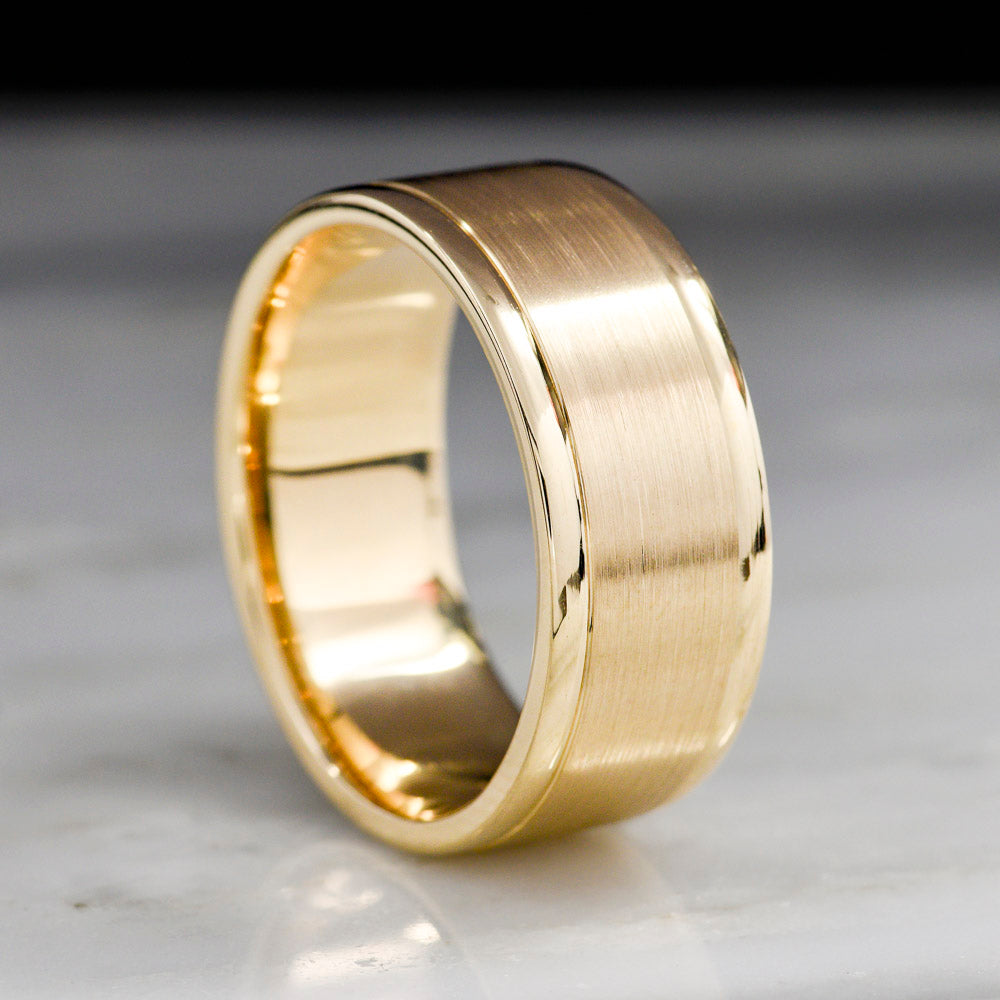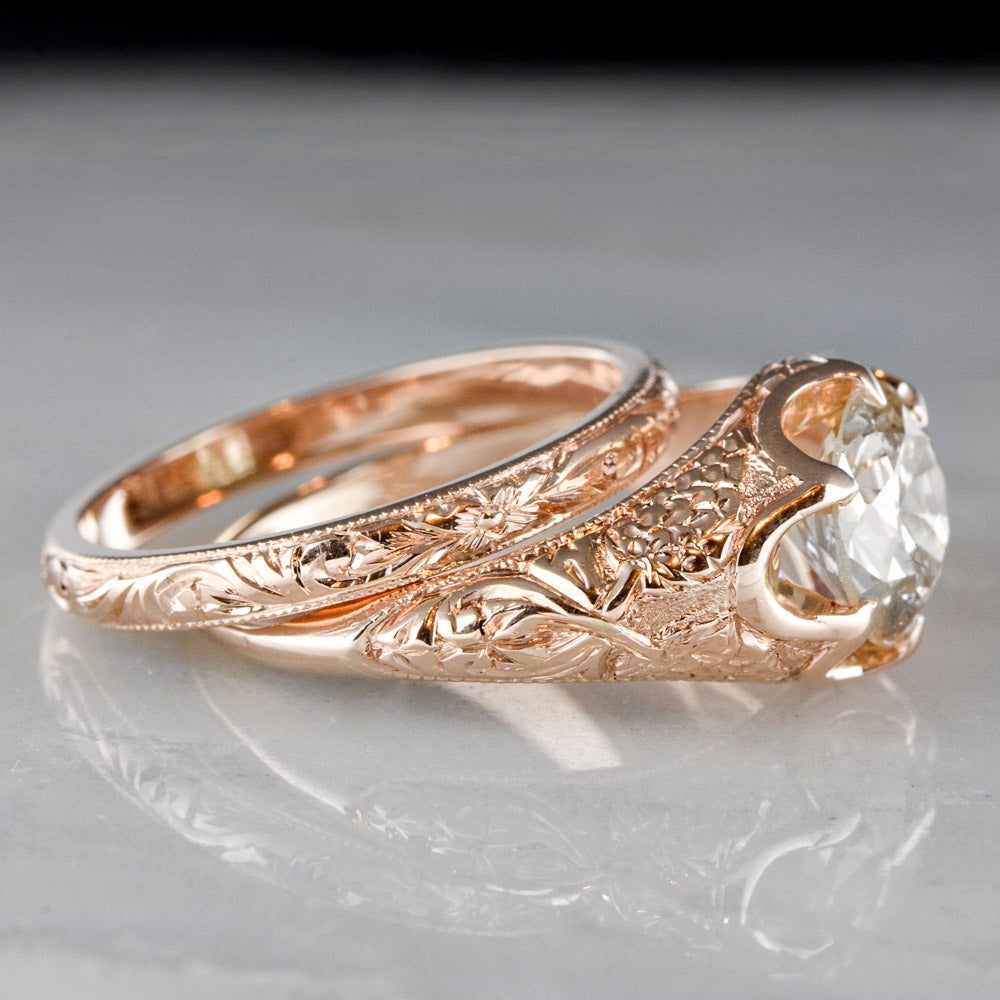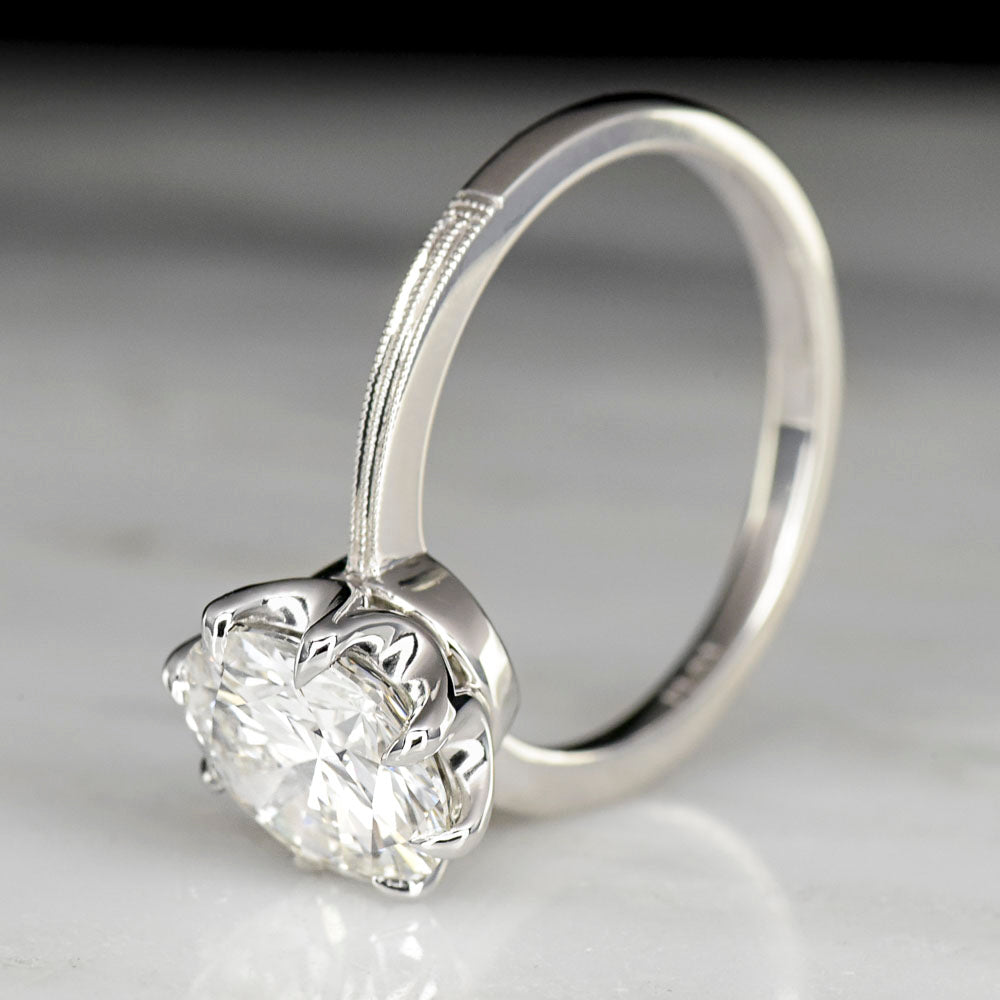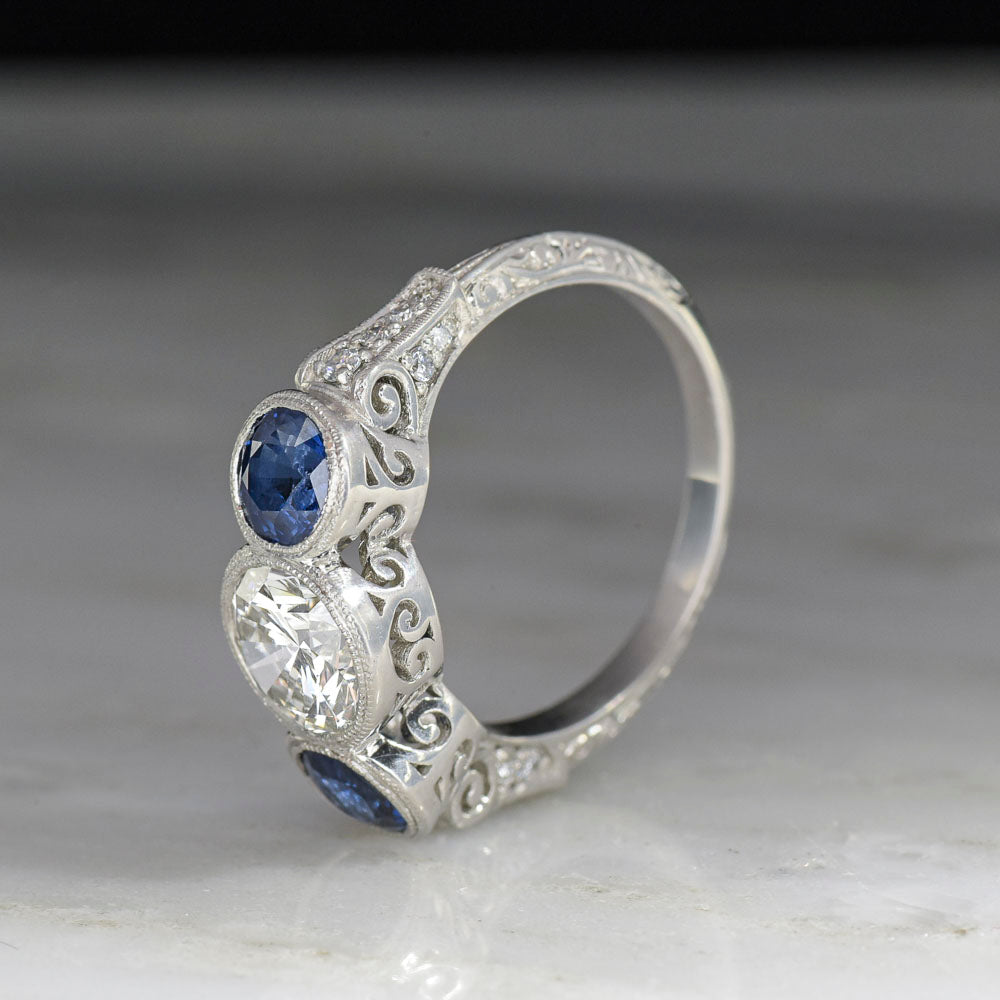Historically-inspired custom designs suited to your tastes and lifestyle
Here, our goldsmith carves your custom piece and its various components from a block of wax. A mold of the carving is taken and a cast is made using your precious metal of choice. The resulting casting is further filed and shaped, adding nuance while work hardening the metal. Custom engraving is added and all stones are set. Finally, any desired patina is applied and the surface is polished to your preferred sheen.
The carved-wax method introduces charming "imperfections" inherent to the handmade, but allows for much more detail than hand-forged rings (where our jeweler works the metal directly). This technique is best for customers open to the goldsmith's artistic interpretation, and those seeking the organic touch of the hand while retaining the option to introduce ornate structural details.
For the CAD method, our computer specialist transcribes our notes and drawings into a three-dimensional computer rendering. Once the CAD is complete and the customer pleased with the design, we "grow" a computer-generated wax model, make a silicone mold, and then craft the piece in metal via vacuum casting. We intentionally leave extra material in the CADs, enabling our goldsmith to refine and hand finish each ring, thereby work hardening the metal. He then adds any desired details such as engraving or milgrain, lending each piece its own unique touch of the handicraft. What results is, in our opinion, more elegant and unique than typical CAD-based pieces, which have little-to-no hand finishing.
This method is best for those seeking exactness, complex structural features, and/or those wanting opportunity to make minor edits to a design before proceeding with fabrication. This is the most flexible method of jewelry design and production.
This is how Matt got his start on the bench side of things (he did all the benchwork and hand-fabrication in our early years, but he now relies exclusively on our goldsmith's talents). With this method, gold is melted into an ingot. The little rod is then pulled and/or rolled time and time again into various wire shapes and sheets. Those materials are tempered, cut, hammered, and filed into the elements required for a specific design. Though it limits a piece's complexity, it typically yields the heaviest, strongest results. Hand-forging is best for customers seeking simplier, more substantial pieces and for lovers of the utterly handicraft.
